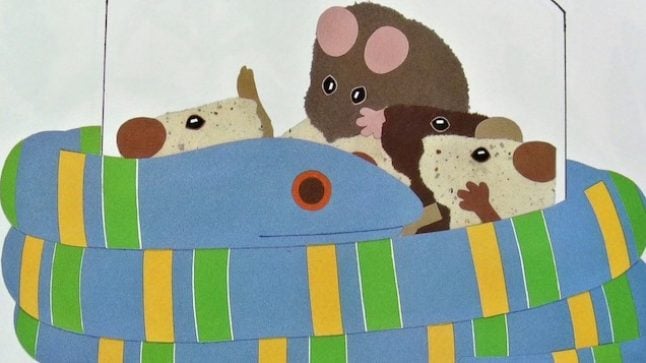Series: Ideas at Work
Control Your Math Fate, Estimate!

Estimation, an important skill for young children to have, can be touched on in many different activities. Benita Johnson, a teacher trained by the Collaborative, was a prekindergarten teacher at Christopher House. She played a game after reading Mouse Count by Ellen Stoll Walsh to bring out the math that was inherent in the story. Games are often best brought out with a good book.
Ms. Johnson used a large jar and “mice” she had created out of three sizes of Styrofoam balls. She first asked each child to estimate how many large mice would fit in the jar and recorded the answers; then the children put the mice in one by one to compare their estimates with the results. She repeated the process with the smaller mice; all along she kept the children thinking actively by discussing what was happening. Using small, medium-sized, and large mice resulted in different questions to the children and different answers from them.
“I could see that it was really important to have concrete materials to do this activity,” Ms. Johnson said. “I also found that it was a good idea to keep asking children questions after placing each mouse in the jar, because it allowed the children to modify their thinking. I could see that the children did begin to understand the idea that larger items take up more space than smaller ones.”
And all along, estimating helped the children think about the reasonableness of their answers.
Tracey Fisher was another participant of the program and tried out a similar activity. With her prekindergarten class at Peirce Elementary, she combined an estimation exercise with a data display to help children order and compare amounts.
For the activity, Ms. Fisher provided a clear jar with a small set of manipulatives inside, in this case bunnies. She put up a chart with three possible amounts, only one of which was correct. Children placed their name card in the column with the amount they think was in the jar. By constraining the number choices, Ms. Fisher helped children focus on reasonable estimates and encourage strategic comparison and logical thinking. If it seemed like more than 4, it had to be either 6 or 10.
The data display the children created was then analyzed. Which amount has the most “votes?” Why did children pick the amounts they did? Finally, a child is selected to count the manipulatives, and the class learned whether they each selected the right estimate. This fun exercise tackled number and operations, number sense, and data analysis in one fell swoop.
Every time I play the estimation game, I always realize what a good reinforcement it is for the concepts of highest, middle, and lowest when comparing how many children guessed each number.
“Every time I play the estimation game,” Ms. Fisher commented, “I always realize what a good reinforcement it is for the concepts of highest, middle, and lowest when comparing how many children guessed each number. It is easy for them to see. I also remind them that estimation is not only in math but also is important for scientific purposes.”
With the right questions to the children, both activities can illustrate estimation in purposeful ways.